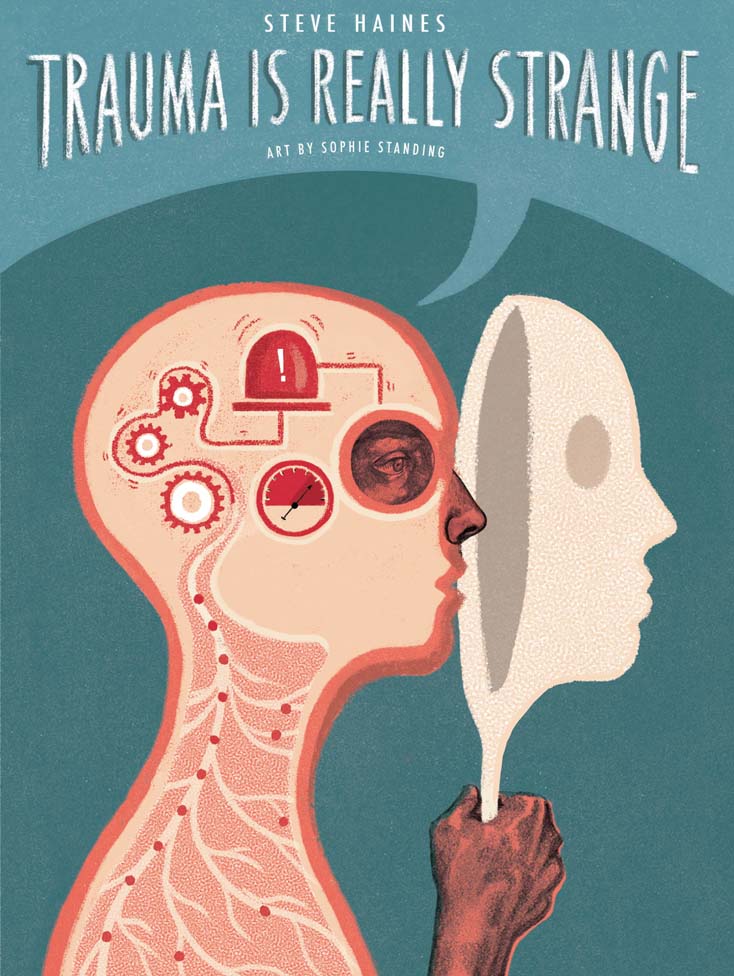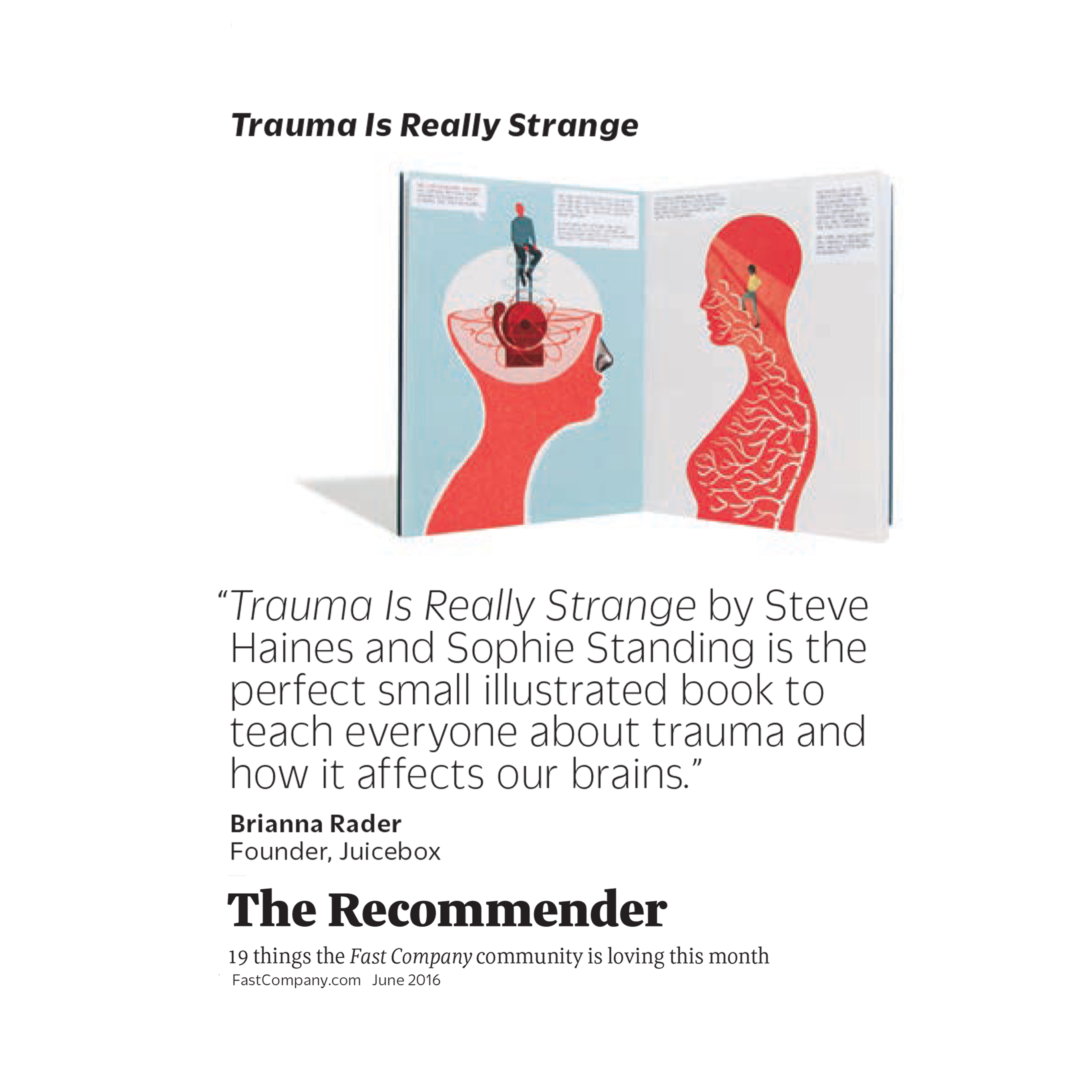Trauma Is Really Strange
Learn how to shake to release tension and feel more connected

What is trauma? How does it change the way our brains work? And how can we overcome it?
When something traumatic happens to us, we dissociate and our bodies shut down their normal processes. This unique comic explains the strange nature of trauma and how it confuses the brain and affects the body.
With wonderful artwork, cat and mouse metaphors, essential scientific facts, and a healthy dose of wit, the narrator reveals how trauma resolution involves changing the body’s physiology and describes techniques that can achieve this, including Trauma Releasing Exercises that allow the body to shake away tension, safely releasing deep muscular patterns of stress and trauma.
#3 Trauma is Really Strange - Steve Haines: Shownotes
#3 Trauma is Really Strange – Steve Haines
Episode Summary
This podcast explores models around stress, trauma and appeasement. One of the core themes is that being aware of habitual survival gestures can help us become more resilient. Dissociation is the hidden mystery of trauma, by learning to be grounded we can put the brakes on overactive threat detections responses.
It is hard when we can not regulate feelings of speeding up to survive or shutting down to survive. The podcast offers it is possible to safely find new ways to connect to our body and our environment to find agency and choice.
Episode Notes
From the archives, audio from a webinar on Trauma is Really Strange on 26 May 2022. You can also view as a video podcast
Trauma is anything that overwhelms our ability to cope. Frequently, people approach healing trauma as a psychological problem. That can be useful, but this webinar will explore how relating to body physiology can help us re-connect to safety. The most basic decision a human being is making is ‘Am I Safe?’. If there is perception of danger, or the habit of feeling unsafe, we can get stuck in primitive defence cascades.
Living every day as if it is an emergency, endlessly turning on reflexes of ‘fight-or-flight’ or ‘freeze’, is exhausting. We will explore bottom up approaches to feeling safe. There are lots of simple tools and principles that help turn down the volume on triggering danger messages.
Steve Haines is author of the best selling Really Strange series. Trauma is Really Strange is far and away the best selling book in the series, people really want to learn about what is happening when we feel overwhelmed.
The first hour is an interactive talk on trauma. It is suitable for people affected by trauma or therapists working with trauma.
The last half hour explores using ‘Relational Touch’ and embodied approaches to overwhelm. This section is aimed at people interested in training with Body College in Biodynamic Craniosacral Therapy
Testimonials
‘Steve, once again in talking head mode, thus diagrammatically takes us through the myriad different forms that trauma can take and what responses we can expect. As before, it’s the incredible degree of symbolism and visual metaphor that Sophie puts into every single illustration which transform this from merely being a succinct and extremely clear explanation of the facts to a fun filled pamphlet of pictorial educational enablement.
They manage to deal with such complex topics in a manner that would be perfectly digestible and understandable even for primary school kids without remotely compromising on the scientific facts. Brilliant!‘
‘It would seem impossible that the weighty subject of trauma could be explored so thoroughly in a comic book format. Yet this pairing of text and image so perfectly balances academic rigor, whimsical design, and engaging little narratives.
At its heart, this book beautifully inspires the reader to see personal trauma as an opportunity for healing and growth.’
Nkem Ndefo, Founder of Lumos Transforms, Certified Nurse Midwife, Trauma Educator
‘Using simple comics, concise explanations and a healthy dose of wit, this clever book not only explains how trauma affects our body and brain, but more importantly, outlines how to support our body’s innate ability to discharge and recover from trauma.’
Richmond Heath, Physiotherapist and TRE Certification Trainer, Trauma Release Australia
Reader Reviews


